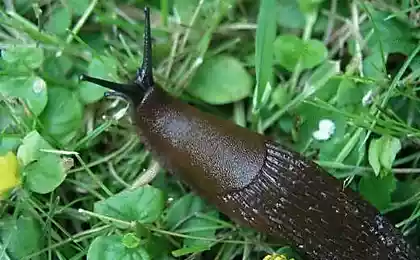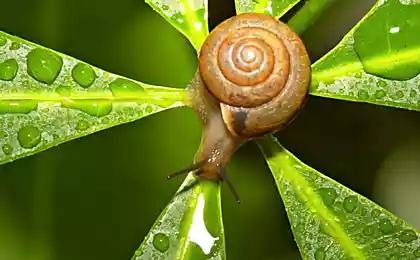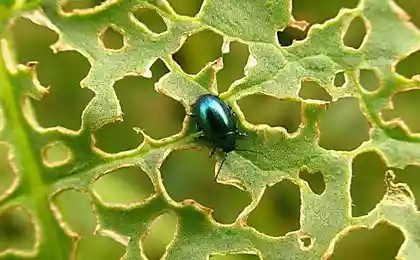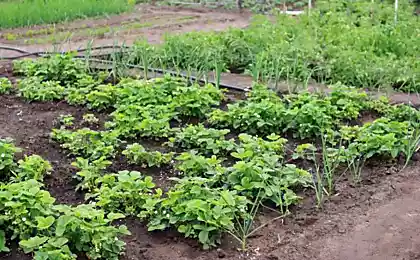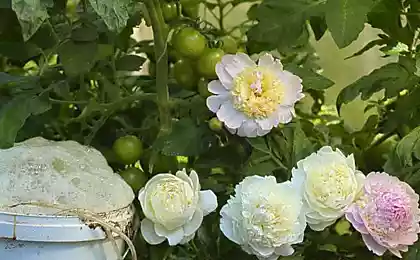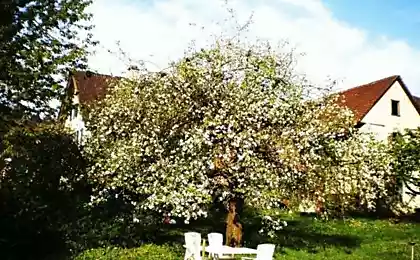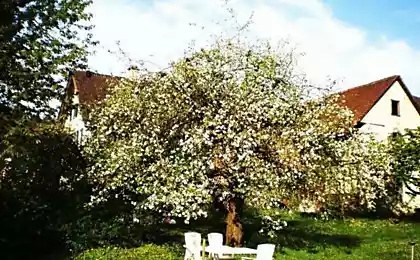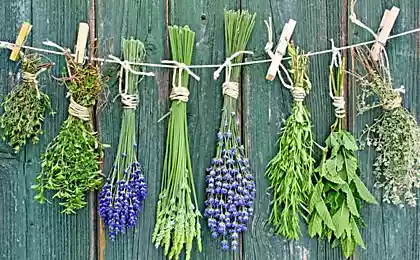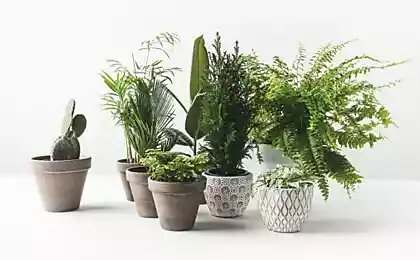656
Pests and drugs to combat the lesions houseplants
Twenty four million seven hundred twenty thousand one hundred twenty seven
The most dangerous flowers for the home were and are pests of indoor plants in the soil. Not so much, but they can cause damage to plant roots, and hence to the flower as a whole. After all, if the root is sick, and the part that is above the earth, will eventually die. And in order to avoid this problem, it is necessary to carefully monitor the quality of the land in which you place the plant at the time of his transplant, and noticed that the flower feels bad, the first thing you need to check is the soil.
For virtually every pot of flower has its own earth, which contains everything you need for this kind of components. And if you want your flowers long please you with green leaves and buds, soil for planting it is best to acquire in stores. So you will minimize the problem of disease roots. But as they say, "forewarned is forearmed", so let's look at the types of pests of house plants and figure out how to protect them from their Pets. And also learn methods of combating harmful insects.
Woodlice This insect is though related to shrimp and lobsters, but prefers to dwell in the land. More specifically, in the damp earth. They do not belong to the most dangerous pests of indoor plants, which can wind up in the soil, but knowing about them is still necessary.
Woodlice prefer damp places and hide in the pallets of pots. This pest is gray and flat body with many legs. Prefer night time. Can harm plants by eating their roots. However, a lot of damage to your plant they will not cause as pill bugs are easy to detect and remove manually.
If your house has plants loving frequent watering, regularly inspect pallets pots, wash them, do not let them accumulate damp earth. So you will not allow the pill bugs to multiply and cause harm to your flowers.
Centipedes This type of pests of houseplants that live in the soil, is very diverse. They form a Zoological class, which includes various insects. One thing unites them – by eating the roots of plants, millipedes do not give him to develop. Millipedes have a serpentine structure: their body is composed of rings, and numerous legs is very difficult to see, until they are petite.
To infect the soil and millipedes in two ways. Either you bought poor quality land (this also happens), or used for planting in ordinary soil from the garden. To detect these insects only during the transplant. If you noticed them in the ground, be sure to change the substrate completely, even the roots should be cleaned from old earth, because it can stay eggs of pests that can harm the fresh soil.
Nagahuedi Another name for these jumping insects like fleas – poduri. This kind of pests houseplants, too, inhabits earth. Multiply nagahuedi very quickly, especially in moist substrate. They feed on decaying vegetable remains, therefore gnawing small holes on the stems that are near the ground, rarely on the roots. The biggest harm of nagahuedi bring in the damp time of year – autumn, when plant growth stops, and it can't cope with life.
If you noticed the infection to get rid of pests just. You need to fill the surface soil with ash, or dried sand. Very effective so-called traps potato: cut a raw potato in half lay on the ground cut down, and after you collect insects, climbed in. If the infection is strong, it is necessary to use special solutions for irrigation. Then you need to consult with a specialist in the store. And best of all thoroughly wash the pot and sweep up all the ground.
These nematodes are small worms damage the root system, causing negative changes in aboveground plant parts. The leaves of the flower fade and wither, and the roots appear bloated. These pests bring potted plants heavy damage, to cure the infected flower is almost impossible. Particularly prone to infection Fig trees, cacti, and cyclamen.
The good news is that home nematodes are rare, they can be entered only with soil from the garden. However, if you are going to professionally grow plants in greenhouses for sale, you should beware of them.
Spider mite Pests of indoor plants and dealing with them is as diverse as the flowers themselves. Insects can cause damage not only to the plant roots. Some species are dangerous to supersoil part of the flower. One such pest is the spider mite. It is dangerous for almost all types of home plants, especially if you warm time of the year pass them on the balcony or in the yard.
The presence of the mites can be seen by the spider's web, stretched between the sheets. These pests eat the leaves from the inside, causing the leaves to lose color and curl inwards. Flower buds damaged by the mites, may dry up and fall off, and not respectives.
Spider mite massively attacked in the hot season, the best prevention is maintaining humidity, so often spray plants. For pest control required acaricide solution, which can be purchased in a specialty store. After treatment, wrap the plant in plastic. So you protect the other flowers from infection and create more humidity, which will accelerate the death of the mites.
Aphids are a Very common pest, but also to detect it quite easily. Aphids are dangerous for all types of houseplants, especially during the summer. Some types of data insects have wings. Flying into the open Windows, aphids occupying a flower, sucking from the leaves and stems juice. Thus, the plant is weakened and ceases to develop.
If you just discovered pests to deal with them is not difficult, just wash the plant with soapy water and then clean. If aphids are already thoroughly settled on the flower, it is treated with special solutions, such as "INTA-VIR", "Karate" or "FAS". You can also apply poisons of plant origin: the infusion of sage or tobacco. Regular treatment will help you avoid the attack of these insects.
Whitefly This type of pest is very similar to winged aphids. Whiteflies are very small, about three millimeters. They attack the inner part of the leaf and drink the juice from them. If time does not take action, the leaves wither, turn yellow and fall off. Since the whitefly is a native of tropical countries, their habitat is very warm and humid room. The most likely victims of these insects are plants with thin leaves and also flowering plants such as Azalea, primrose, hibiscus.
Good prevention of whiteflies is the ventilation and lowering the temperature. You can treat the plant with insecticide solution: this should be done once a month. It is desirable to prevent contamination of the flower, because to deal with this pest quite difficult.
Weevils and Caterpillars, These insects have a length of about one and a half inches and rigid wings. They are especially dangerous for begonias and azaleas. Eating around the edges of the leaves, weevils cause irreparable harm to the plant, and their larvae feed on the roots. These pests attack the flower from two sides, so the plant stops development quickly weakens and eventually dies.
To deal with the weevils need the same insecticide. If the infection was severe, procedure should be repeated again in about a week.
About these pests know everything. Caterpillars are the larvae of butterflies that feed on the foliage of trees and plants. In the garden, on the veranda or on the balcony of your flowers are at risk to be their food. If left unchecked pests, the plants can remain without leaves. To deal with the caterpillars is easy, they just need to remove by hand and destroy. However, the prevention of insecticide will be as effective.
Mealybugs and Scale insects Is really a disaster for all houseplants. Them very difficult to control because they multiply quickly, replacing for a year a few generations. Insects are protected by a shell similar to shell mussels. Forming on the stems and leaves of stationary columns, scale insects suck out plant juice.
This category of pests includes Australian mealybugs (about ladybugs). They are different from insects only by the fact that sometimes move around the plant. In the home scale insects well survive, since their development is optimal room temperature.
Root scale insects, mealy relatives, a bit smaller. Live and reproduce in the roots. The biggest danger these pests pose to plants with thick leaves, highlighting the dew which forms burns. Due to the fact that scale insects and mealybugs spread rapidly, they are able to bring irreparable harm to the plant. Stems cracks appear, the leaves turn yellow, then wither away of branches and the flower dies.
To deal with these insects in several ways. First, you have to wipe the affected areas with a solution of spirit to wait twenty minutes and remove the pests from the plants moist cotton swab. Next, you need to spray the flower with insecticide. The fight against root mealybugs requires transplanting the plants into the new land. Roots before transplanting should be thoroughly washed under running water. And in the three months to water the plant half a dilute solution of insecticide.
Miners and Thrips Species is a type of flies. They lay on the leaves and stems of the eggs, and their larvae gnaw through, there's a long tunnel. If larvae are little – it just spoils the view of the plants, and when the infection is strong, the flower ceases to grow and develop. Because miners are rare guests in homes and apartments, treat the plants with poison is not necessary, simply remove the damaged sheet, you notice the tracks left by the miners.
Thrips are very small insects, no larger than a millimeter. The attack of thrips can be confused with the attack of spider mite, however, this pest leaves the plant the web. Very well multiply in a warm room. Despite the fact that thrips have a pair of tiny wings, they are inactive. Damage is caused not only adults but also larvae of insects. Drink from the leaves of the liquid, than provoke cardiac development, the leaves wither, as they do not have enough moisture and air. Buds damaged by this pest are deformed, they formed white spots and the flower dies, and not having time to blossom.
Thrips do not like the smell of mothballs, so a few balls it does not hurt near the vulnerable plants, such as near cyclamen or begonias. If the infection still occurred, you must handle flower remedy for aphids, repeating this procedure five to six days. You can also spray the plant extract of onion or garlic (1 teaspoon on 1 glass of water). Flowers that are not sprayed, treated in the following way: finely chopped garlic placed near the plant and covered the flower with the "cure" polyethylene for two or three hours.
And finally... to conclude this article, only one – pests of indoor plants quite a lot, and their appearance is a real nightmare for the avid grower. However, it is not as scary as it may be presented to you, because all of them have already developed effective methods of struggle. And if in time to think suddenly, the plant will fully recover, and will long to please you.
Growing indoor plants is a very fascinating hobby. But to achieve some success in this lesson will help only knowledge, and, of course, patience. The main thing that needs to remember florist – prevention never hurts. Regularly inspect your Pets, check every leaf, every twig. The sooner you find traces of pests, the easier and faster control.
Development and flowering potted plants depends on their master. Treat your colors, like your best friends, understand them, and sometimes even talk. Believe me it is better than to pour the plants with fertilizers, because they will not help unless proper care and love! published
P. S. And remember, only by changing their consumption — together we change the world! ©
Source: secretdachi.ru
The most dangerous flowers for the home were and are pests of indoor plants in the soil. Not so much, but they can cause damage to plant roots, and hence to the flower as a whole. After all, if the root is sick, and the part that is above the earth, will eventually die. And in order to avoid this problem, it is necessary to carefully monitor the quality of the land in which you place the plant at the time of his transplant, and noticed that the flower feels bad, the first thing you need to check is the soil.
For virtually every pot of flower has its own earth, which contains everything you need for this kind of components. And if you want your flowers long please you with green leaves and buds, soil for planting it is best to acquire in stores. So you will minimize the problem of disease roots. But as they say, "forewarned is forearmed", so let's look at the types of pests of house plants and figure out how to protect them from their Pets. And also learn methods of combating harmful insects.
Woodlice This insect is though related to shrimp and lobsters, but prefers to dwell in the land. More specifically, in the damp earth. They do not belong to the most dangerous pests of indoor plants, which can wind up in the soil, but knowing about them is still necessary.
Woodlice prefer damp places and hide in the pallets of pots. This pest is gray and flat body with many legs. Prefer night time. Can harm plants by eating their roots. However, a lot of damage to your plant they will not cause as pill bugs are easy to detect and remove manually.
If your house has plants loving frequent watering, regularly inspect pallets pots, wash them, do not let them accumulate damp earth. So you will not allow the pill bugs to multiply and cause harm to your flowers.
Centipedes This type of pests of houseplants that live in the soil, is very diverse. They form a Zoological class, which includes various insects. One thing unites them – by eating the roots of plants, millipedes do not give him to develop. Millipedes have a serpentine structure: their body is composed of rings, and numerous legs is very difficult to see, until they are petite.
To infect the soil and millipedes in two ways. Either you bought poor quality land (this also happens), or used for planting in ordinary soil from the garden. To detect these insects only during the transplant. If you noticed them in the ground, be sure to change the substrate completely, even the roots should be cleaned from old earth, because it can stay eggs of pests that can harm the fresh soil.
Nagahuedi Another name for these jumping insects like fleas – poduri. This kind of pests houseplants, too, inhabits earth. Multiply nagahuedi very quickly, especially in moist substrate. They feed on decaying vegetable remains, therefore gnawing small holes on the stems that are near the ground, rarely on the roots. The biggest harm of nagahuedi bring in the damp time of year – autumn, when plant growth stops, and it can't cope with life.
If you noticed the infection to get rid of pests just. You need to fill the surface soil with ash, or dried sand. Very effective so-called traps potato: cut a raw potato in half lay on the ground cut down, and after you collect insects, climbed in. If the infection is strong, it is necessary to use special solutions for irrigation. Then you need to consult with a specialist in the store. And best of all thoroughly wash the pot and sweep up all the ground.
These nematodes are small worms damage the root system, causing negative changes in aboveground plant parts. The leaves of the flower fade and wither, and the roots appear bloated. These pests bring potted plants heavy damage, to cure the infected flower is almost impossible. Particularly prone to infection Fig trees, cacti, and cyclamen.
The good news is that home nematodes are rare, they can be entered only with soil from the garden. However, if you are going to professionally grow plants in greenhouses for sale, you should beware of them.
Spider mite Pests of indoor plants and dealing with them is as diverse as the flowers themselves. Insects can cause damage not only to the plant roots. Some species are dangerous to supersoil part of the flower. One such pest is the spider mite. It is dangerous for almost all types of home plants, especially if you warm time of the year pass them on the balcony or in the yard.
The presence of the mites can be seen by the spider's web, stretched between the sheets. These pests eat the leaves from the inside, causing the leaves to lose color and curl inwards. Flower buds damaged by the mites, may dry up and fall off, and not respectives.
Spider mite massively attacked in the hot season, the best prevention is maintaining humidity, so often spray plants. For pest control required acaricide solution, which can be purchased in a specialty store. After treatment, wrap the plant in plastic. So you protect the other flowers from infection and create more humidity, which will accelerate the death of the mites.
Aphids are a Very common pest, but also to detect it quite easily. Aphids are dangerous for all types of houseplants, especially during the summer. Some types of data insects have wings. Flying into the open Windows, aphids occupying a flower, sucking from the leaves and stems juice. Thus, the plant is weakened and ceases to develop.
If you just discovered pests to deal with them is not difficult, just wash the plant with soapy water and then clean. If aphids are already thoroughly settled on the flower, it is treated with special solutions, such as "INTA-VIR", "Karate" or "FAS". You can also apply poisons of plant origin: the infusion of sage or tobacco. Regular treatment will help you avoid the attack of these insects.
Whitefly This type of pest is very similar to winged aphids. Whiteflies are very small, about three millimeters. They attack the inner part of the leaf and drink the juice from them. If time does not take action, the leaves wither, turn yellow and fall off. Since the whitefly is a native of tropical countries, their habitat is very warm and humid room. The most likely victims of these insects are plants with thin leaves and also flowering plants such as Azalea, primrose, hibiscus.
Good prevention of whiteflies is the ventilation and lowering the temperature. You can treat the plant with insecticide solution: this should be done once a month. It is desirable to prevent contamination of the flower, because to deal with this pest quite difficult.
Weevils and Caterpillars, These insects have a length of about one and a half inches and rigid wings. They are especially dangerous for begonias and azaleas. Eating around the edges of the leaves, weevils cause irreparable harm to the plant, and their larvae feed on the roots. These pests attack the flower from two sides, so the plant stops development quickly weakens and eventually dies.
To deal with the weevils need the same insecticide. If the infection was severe, procedure should be repeated again in about a week.
About these pests know everything. Caterpillars are the larvae of butterflies that feed on the foliage of trees and plants. In the garden, on the veranda or on the balcony of your flowers are at risk to be their food. If left unchecked pests, the plants can remain without leaves. To deal with the caterpillars is easy, they just need to remove by hand and destroy. However, the prevention of insecticide will be as effective.
Mealybugs and Scale insects Is really a disaster for all houseplants. Them very difficult to control because they multiply quickly, replacing for a year a few generations. Insects are protected by a shell similar to shell mussels. Forming on the stems and leaves of stationary columns, scale insects suck out plant juice.
This category of pests includes Australian mealybugs (about ladybugs). They are different from insects only by the fact that sometimes move around the plant. In the home scale insects well survive, since their development is optimal room temperature.
Root scale insects, mealy relatives, a bit smaller. Live and reproduce in the roots. The biggest danger these pests pose to plants with thick leaves, highlighting the dew which forms burns. Due to the fact that scale insects and mealybugs spread rapidly, they are able to bring irreparable harm to the plant. Stems cracks appear, the leaves turn yellow, then wither away of branches and the flower dies.
To deal with these insects in several ways. First, you have to wipe the affected areas with a solution of spirit to wait twenty minutes and remove the pests from the plants moist cotton swab. Next, you need to spray the flower with insecticide. The fight against root mealybugs requires transplanting the plants into the new land. Roots before transplanting should be thoroughly washed under running water. And in the three months to water the plant half a dilute solution of insecticide.
Miners and Thrips Species is a type of flies. They lay on the leaves and stems of the eggs, and their larvae gnaw through, there's a long tunnel. If larvae are little – it just spoils the view of the plants, and when the infection is strong, the flower ceases to grow and develop. Because miners are rare guests in homes and apartments, treat the plants with poison is not necessary, simply remove the damaged sheet, you notice the tracks left by the miners.
Thrips are very small insects, no larger than a millimeter. The attack of thrips can be confused with the attack of spider mite, however, this pest leaves the plant the web. Very well multiply in a warm room. Despite the fact that thrips have a pair of tiny wings, they are inactive. Damage is caused not only adults but also larvae of insects. Drink from the leaves of the liquid, than provoke cardiac development, the leaves wither, as they do not have enough moisture and air. Buds damaged by this pest are deformed, they formed white spots and the flower dies, and not having time to blossom.
Thrips do not like the smell of mothballs, so a few balls it does not hurt near the vulnerable plants, such as near cyclamen or begonias. If the infection still occurred, you must handle flower remedy for aphids, repeating this procedure five to six days. You can also spray the plant extract of onion or garlic (1 teaspoon on 1 glass of water). Flowers that are not sprayed, treated in the following way: finely chopped garlic placed near the plant and covered the flower with the "cure" polyethylene for two or three hours.
And finally... to conclude this article, only one – pests of indoor plants quite a lot, and their appearance is a real nightmare for the avid grower. However, it is not as scary as it may be presented to you, because all of them have already developed effective methods of struggle. And if in time to think suddenly, the plant will fully recover, and will long to please you.
Growing indoor plants is a very fascinating hobby. But to achieve some success in this lesson will help only knowledge, and, of course, patience. The main thing that needs to remember florist – prevention never hurts. Regularly inspect your Pets, check every leaf, every twig. The sooner you find traces of pests, the easier and faster control.
Development and flowering potted plants depends on their master. Treat your colors, like your best friends, understand them, and sometimes even talk. Believe me it is better than to pour the plants with fertilizers, because they will not help unless proper care and love! published
P. S. And remember, only by changing their consumption — together we change the world! ©
Source: secretdachi.ru



